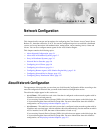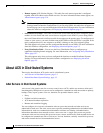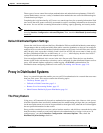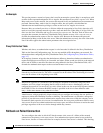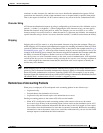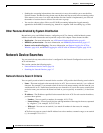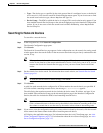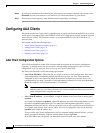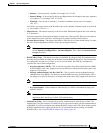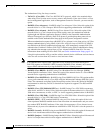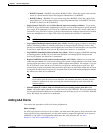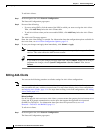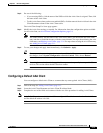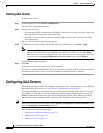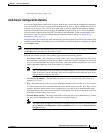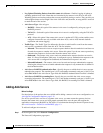
3-4
User Guide for Cisco Secure Access Control Server
OL-9971-01
Chapter 3 Network Configuration
Proxy in Distributed Systems
An Example
This section presents a scenario of proxy that is used in an enterprise system. Mary is an employee with
an office in the corporate headquarters in Los Angeles. Her username is mary@la.corporate.com. When
Mary needs access to the network, she accesses the network locally and authenticates her username and
password. Because Mary works in the Los Angeles office, her user profile, which defines her
authentication and authorization privileges, resides on the local Los Angeles AAA server.
However, Mary occasionally travels to a division within the corporation in New York, where she still
needs to access the corporate network to get her e-mail and other files. When Mary is in New York, she
dials in to the New York office and logs in as mary@la.corporate.com. The New York ACS does not
recognize her username, but the Proxy Distribution Table contains an entry, @la.corporate.com, to
forward the authentication request to the Los Angeles ACS. Because the username and password
information for Mary reside on that AAA server, when she authenticates correctly, the AAA client in the
New York office applies the authorization parameters that are assigned to her.
Proxy Distribution Table
Whether, and where, an authentication request is to be forwarded is defined in the Proxy Distribution
Table on the Network Configuration page. You can use multiple ACSs throughout your network. For
information about configuring the Proxy Distribution Table, see Configuring Proxy Distribution Tables,
page 3-27.
ACS employs character strings that the administrator defines to determine whether an authentication
request should be processed locally or forwarded, and where. When an end user dials in to the network
device and ACS finds a match for the character string defined in the Proxy Distribution Table, ACS
forwards the authentication request to the associated remote AAA server.
Note When an ACS receives a TACACS+ authentication request forwarded by proxy, any requests for
Network Access Restrictions for TACACS+ are applied to the IP address of the forwarding AAA server,
not to the IP address of the originating AAA client.
Note When an ACS proxies to a second ACS, the second ACS responds to the first by using only IETF
attributes, no VSAs, when it recognizes the first ACS as the AAA server. Alternatively, you can
configure thesecond ACS to see an ACS as a AAA client; in this case, the second ACS responses include
the RADIUS VSAs for whatever RADIUS vendor is specified in the AAA client definition table
entry—in the same manner as any other AAA client.
Administrators with geographically dispersed networks can configure and manage the user profiles of
employees within their immediate location or building. The administrator can, therefore, manage the
policies of just their users and all authentication requests from other users within the company can be
forwarded to their respective AAA server for authentication. Not every user profile must reside on every
AAA server. Proxies save administration time and server space, and allows end users to receive the same
privileges regardless of the access device through which they connect.
Fallback on Failed Connection
You can configure the order in which ACS checks remote AAA servers if a failure of the network
connection to the primary AAA server occurs. If an authentication request cannot be sent to the first
listed server, because of a network failure for example, the next listed server is checked. This checking



